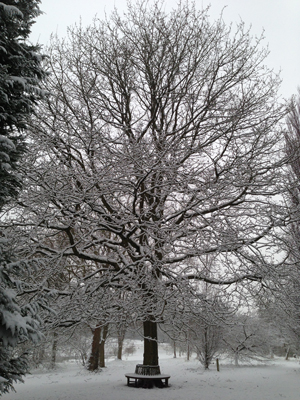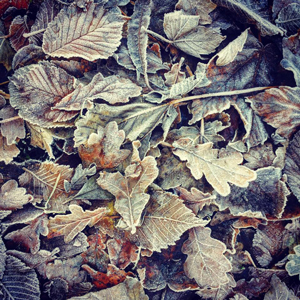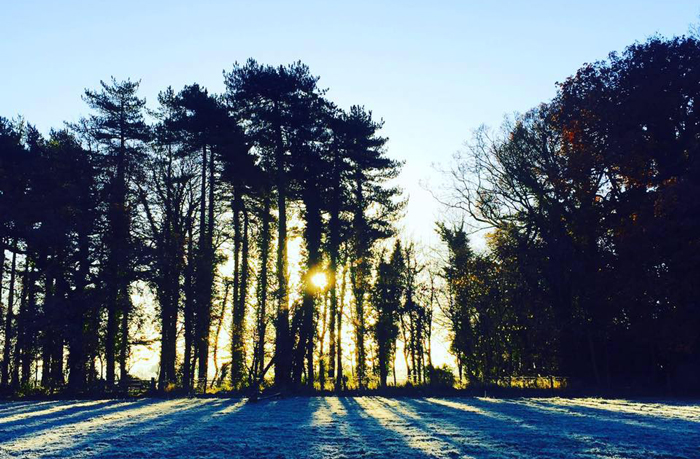Winter at Thorp Perrow
Winter at Thorp Perrow is a truly magical time of the year, writes Faith Douglas, Curator, Thorpe Perrow Aboretum who gives us an interesting insight into this lovely Arboretum in North Yorkshire.
Most of us know the story of Narnia and its magical wardrobe that leads into a tree lined Wintery wonderland. Well on a crisp Winters day walking through those gates into the Arboretum is for me like walking into my very own Narnia in North Yorkshire!
On a frosty day, every tree stands out. Every plant is noticeable, every branch and stem is lined with that magical sparkle. There is nothing better than hearing that crunch under my feet and the cold air against my face.
 The Mound is always a spectacular site in the frost, a collection of grasses stand proudly almost hugging the entire area whilst in and amongst it stand the Phlomis fruticosa – we leave the seed heads on for the frost to gather and it really adds to the wonder. But I think it must be the Cortaderia or Pampas Grass that really stands out for me; a mass of shivering shiny plumes of frost standing so tall against a back drop of huge majestic Conifers!
The Mound is always a spectacular site in the frost, a collection of grasses stand proudly almost hugging the entire area whilst in and amongst it stand the Phlomis fruticosa – we leave the seed heads on for the frost to gather and it really adds to the wonder. But I think it must be the Cortaderia or Pampas Grass that really stands out for me; a mass of shivering shiny plumes of frost standing so tall against a back drop of huge majestic Conifers!
Winter is a time when our Evergreens come to life. I feel that they stand waiting for this moment all year, finally when the leaves of the deciduous trees drop there they are standing in all their finery! It’s at this time of the year we really appreciate them and realise what a vital role they play in our collection. One of the first things Sir Leonard Ropner would of thought about is planting the Evergreens – they quite literally hug the Arboretum. They have been used to create bays, glades, and structure everywhere you look. In amongst these Evergreen microclimates that have been cleverly created we can grow more tender species of plant.
A large and healthy Cercis siliquastrum or Judas Tree grows in such an area, native to the Mediterranean and whilst they do well in the South of our country we must be reminded that this is indeed North Yorkshire! Another great example is our Quercus canariensis, a semi evergreen Oak tree native to North Africa!
We have some rather impressive Evergreens growing here too. A visit to the Milbank Pinetum and this soon becomes obvious. With our Pinetum collection, mostly from North America and dating back to the 1800’s it is great to think that some of these trees will have come from the hands of some very great plant hunters.
A real showstopper is our huge Sequoiadendron giganteum or Giant Redwood standing at the top of the Pinetum, a tree you really do need to go and touch!
 Wondering into Springs Wood will also give you two more stunning Pines dating back to the plant hunter times; an amazing Corsican Pine that dates to 1842 stands proudly and just next to it a huge multi topped Western Yellow Pine dating back to 1845.
Wondering into Springs Wood will also give you two more stunning Pines dating back to the plant hunter times; an amazing Corsican Pine that dates to 1842 stands proudly and just next to it a huge multi topped Western Yellow Pine dating back to 1845.
Sir Leonard added to the Evergreen collection over the years adding some amazing specimen trees one of which he planted in 1961 the endangered Abies nebrodensis or Sicilian Fir which produces the most amazing large white cones!
Winter is also a time when some very fine deciduous trees come to life. Just taking a walk into our Bark Park will show you why. Every tree in this cleverly designed area has the most amazing bark. An amazingly tactile area with different structures and colour everywhere you look. Our collection of Hamamelis come into flower over Winter, with their beautiful spidery flowers in various colours lining the lake side. Known as the Witch Hazel it’s the scent their unusual little flowers give off that I just cannot resist.
Winter at Thorp Perrow is a time for all ages; our very popular Santa’s Grotto runs until Christmas Eve. We have reduced entry for all throughout January and we run our Snowdrop trail throughout February – see how many unusual varieties you can spot!
Ever the optimist I, as usual, will be hoping for snow this Winter – I’ll be the one skipping around in North Yorkshires very own Narnia!
For information on opening times at Thorp Perrow, Bedale, North Yorkshire log onto
www.thorpperrow.com
Photo credits: All photographs ©Thorp Perrow


